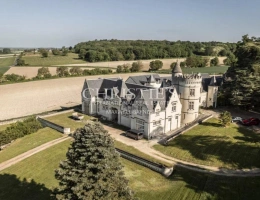
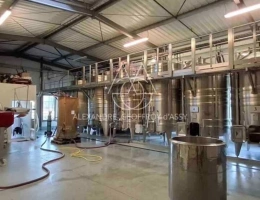
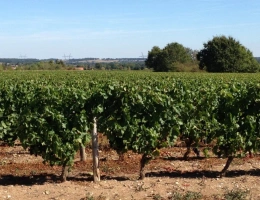
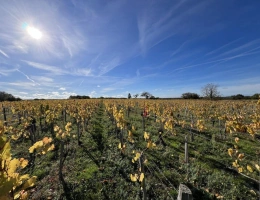
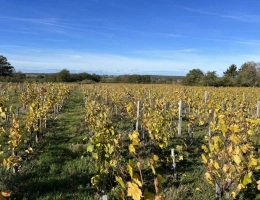
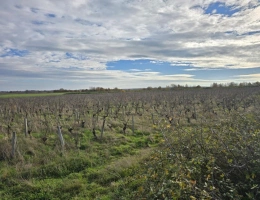
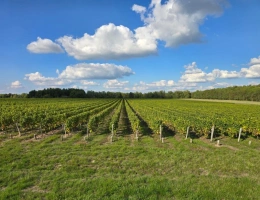
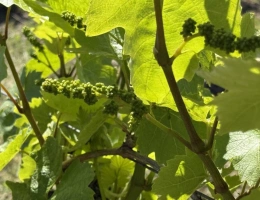
The Val de Loire vineyards cross 7 départements: Loire-Atlantique, Maine-et-Loire, Indre-et-Loire, Loir-et-Cher, Loiret, Nièvre and Yonne. Between them, they represent a total of more than 1,000 km, or 57,000 hectares of vines.
In the Loire Valley, this notion has grown in importance over the decades, becoming a real pillar of local viticulture. The natural elements of this environment play a crucial role in defining the terroir, making a decisive contribution to its specificity. The complex interaction between different factors, whether natural, biological, cultural or oenological, creates what is known as the "terroir effect", giving wines a unique identity. The Appellation d'Origine Contrôlée (AOC) system is based on this notion of terroir, making it possible to define and protect agricultural products linked to a specific territory, which contributes greatly to the reputation of French wines.
In-depth knowledge of the terroir enables the winegrowers of the Loire Valley to adapt their production practices to optimise the quality and authenticity of their wines, constantly striving to achieve perfect harmony between the soil and the end product.
The presence of the Loire and its many tributaries has a significant moderating effect on the climate in the vineyards of the Val de Loire. This phenomenon encourages the creation of a variety of microclimates that are ideal for growing vines, contributing to the remarkable diversity of wines produced in the region. In particular, this buffering effect plays a decisive role in the production of sweet and syrupy wines.
The vineyards of Nantes have their origins in the eruptive and metamorphic rocks of the Armorican Massif, mainly gneiss, mica schist, greenstone and granite.
In the Anjou vineyards, the subsoil consists mainly of slate, sandstone and carboniferous schist, as well as volcanic rock, also from the Armorican Massif.
Between the vineyards of Anjou and Saumur, there is a geological transition between the ancient basement to the west and the sedimentary basin to the east.
In the vineyards of Saumur and Touraine, the subsoil is characterised by the presence of tuffeau chalk, typical of the Paris Basin, as well as sands and flint clays. The terraces along the banks of the Loire and Vienne rivers are made up of sand and gravel formed by the erosion of rivers over time.
In the Nantes wine-growing area, the oceanic influence moderates seasonal variations, with mild autumns and winters and hot, often humid summers.
The region's climate is temperate overall, oceanic with continental and mountain influences.
The Loire Valley vineyards are famous for their Crémant de Loire and Rosé de Loire wines.
In the Nantes vineyard region, there are appellations such as coteaux-d'Ancenis, gros-plant-du-pays-nantais, muscadet and fiefs-vendéens. For the Anjou vineyards, the appellations include Anjou, Anjou-gamay, Anjou villages, Anjou villages Brissac, Anjou fines bulles, Anjou-coteaux-de-la-Loire, bonnezeaux, cabernet d'Anjou, chaume, and many others. The vineyards of Touraine offer appellations such as bourgueil, chinon, cheverny, coteaux-du-loir, haut-Poitou, and more. The vineyards of the Orléanais region offer wines such as orléans, orléans-Cléry and coteaux-du-giennois. The vineyards of the Centre-Loire region include appellations such as Châteaumeillant, Menetou-Salon, pouilly-fumé, pouilly-sur-Loire, quincy, reuilly and others. The vineyards of the Massif Central include appellations such as côte-roannaise, côtes-d'auvergne, côtes-du-forez, saint-Pourçain and Urfé.
As far as grape varieties are concerned, the Loire Valley vineyards are rich in unique varieties, mainly grown as single varietals. White varieties include Sauvignon Blanc, Chenin Blanc, Chardonnay, Folle Blanche, Melon de Bourgogne and many others. Red grape varieties, also used as single varietals, include Cabernet Franc, Gamay, Cabernet Sauvignon, Grolleau, Pinot Noir and others.
Each year, the region produces 4 million hectolitres of wine, with white wines predominating (43%), followed by reds (31%), fine bubbles (14%) and rosés (10%).
Our blog includes a quality section devoted to vineyard prices in France. A specific article presents the price of vines for each appellation in the Loire Valley.
The average price of vines is €39,200 per hectare, placing it at an intermediate financial level among the major French vineyards.
The Sancerre and Pouilly-Fumé appellations are the most expensive, with average prices of €260,000 and €160,000 per hectare respectively.
But the price of the vines is only one component of the price of a wine estate to buy. Then there are the buildings (winery, equipment storage shed, cellar, etc.), the equipment, the wine stock and possibly a house.
That's why prices start at over €200,000 for an overall property and can reach several million euros for prestigious estates. At the higher end of the price range, the properties are generally backed by a château, a fine residence with character, numerous outbuildings and a very large area of vines.
This is why prices start at over €500,000 for an overall property and can reach up to €1 million for prestigious properties. At the higher end of the price range, the properties are generally backed by a beautiful mansion full of character, numerous outbuildings and a large area of vines.
Find out more on ma-propriete-viticole.fr, the leading rural property advertisements portal, a wide selection of wine estates for sale in France. In addition to the Loire Valley, which we present in this sub-category, you'll also find wine estates for sale in Alsace, Bordeaux, the Rhône Valley, Languedoc-Roussillon, Beaujolais, Burgundy, Jura, Charente, Cognac, Champagne, Corsica, etc.
Thanks to our highly advanced search tool, you can select the wine estates to be taken over according to vineyard, location, surface area or purchase price. If you don't find the wine property for sale that matches your criteria, you can create an alert to be automatically informed of new properties for sale that are published on our portal.
ma-propriete.fr is the ideal site for advertising the sale of your wine estate, whatever the appellation or geographical location in France. If you advertise your wine estate for 6 months, you will benefit from the high visibility of our portal and will be contacted by many potential buyers.
You can modify your sale advert at any time and publish it in 1 or 2 categories or sub-categories on our portal. You will have access to the visibility statistics for your advert and will receive the contact forms directly to your email inbox.
Whether you are a winegrower wishing to sell your estate or your vines, or a wine transaction professional (estate agency or notary), our portal will meet your needs to ensure the successful sale of your agricultural property.